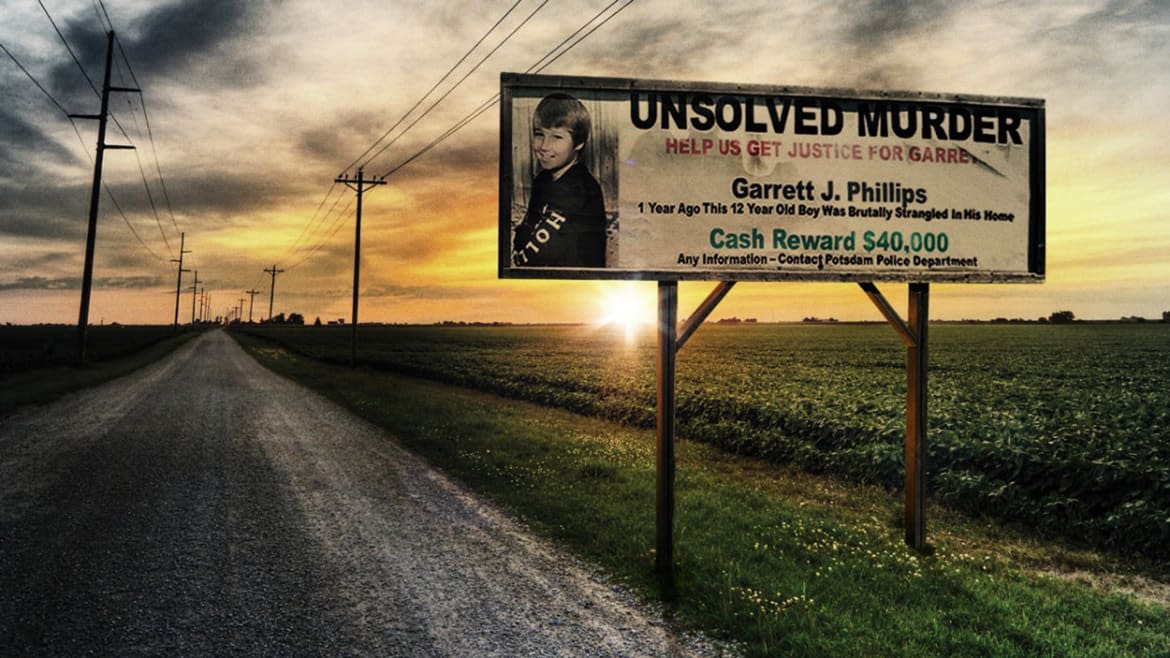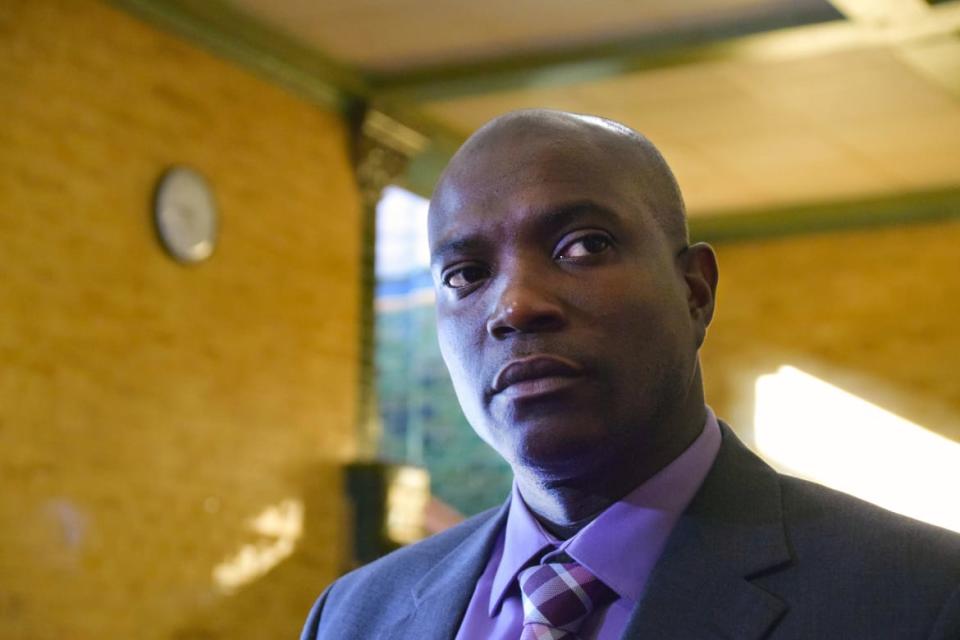The Curious Case of a Black Man Wanted for Murdering a White Child in Small-Town America

Oral “Nick” Hillary is a military veteran and All-American collegiate soccer player (and Division III national champion) who, in 2011, became the prime suspect in the murder of his former girlfriend Tandy Cyrus’ older son, 12-year-old Garrett Phillips. There was no physical evidence linking him to the crime, nor any rational motive, but police zeroed in on him almost exclusively from the start. In the tiny upstate New York town of Potsdam, Nick soon became notorious for supposedly committing this heinous slaying. Almost three years later, on February 2, 2015, he was indicted for the crime, this despite the case against him being completely circumstantial.
Nick, by the way, is black. And the Potsdam community is predominantly white.
Race is the prime factor of Liz Garbus’ excellent new two-part HBO documentary Who Killed Garrett Phillips? (premiering July 23 and 24), since numerous elements of its story suggest that the color of Nick’s skin played a big part in his eventual prosecution. Yet while the latest from director Garbus (What Happened, Miss Simone?) is, first and foremost, a saga about criminal justice system inequity, it’s also something more: an unsolved mystery about the death of a young boy that’s woefully short on concrete answers.
What’s known for certain is that on the afternoon of Monday, Oct. 24, 2011, between approximately 4:55 p.m. and 5:08 p.m., Garrett Phillips was fatally strangled and suffocated in his apartment at 100 Market Street (he passed away from his injuries approximately two hours later at the hospital). Hearing disquieting noises from Garrett’s place, neighbors called the police. The responding officer thought he heard sounds coming from inside. Once he gained entry, however, all he found was Garrett, as well as signs that the perpetrator had jumped out a rear window to the street below.
‘Behind Closed Doors’: How a 13-Year-Old Girl’s Murder Ignited Class Warfare
The Wildly Popular TV Host Accused of Killing People to Boost His Ratings
There were no eyewitnesses, but trace amounts of DNA were discovered beneath Garrett’s fingernails. After speaking to the Phillips family, detectives quickly focused on Nick, a father of five who’d begun dating Tandy after meeting her at a bar, and whose relationship with her had ended over reported tensions between him and Tandy’s two boys. Nick had an alibi (he was at home with his eldest daughter, and then beginning at 5:21 p.m., with his friend/colleague Ian), and his DNA didn’t match what was found on Garrett. He also had no reason to commit murder, unless one believed that he wanted revenge against Garrett because he blamed the boy for his split with Tandy.
Nonetheless, rather than chasing any other leads or considering other possible suspects, the Potsdam cops made Nick their sole target. In damning video presented by Who Killed Garrett Phillips?, local and state police officers call Nick in for an interview under false pretenses, then grill him on his culpability, and finally physically bar him from leaving—and, shortly thereafter, force him to strip nude for photos. They do this to see if he has injuries consistent with a scuffle with Garrett or a fall from a tall window. But given that cops later testify that such a practice was never used before, it reeks of demonizing intimidation. The fix is in, it seems, and that impression only mounts when District Attorney Nicole Duvé decides to not arrest Nick (due to lack of evidence)—and, as a result, loses an election to new DA Mary Rains, who campaigned on the promise of bringing Nick to justice.
That it takes nearly 30 months to indict Nick—this after a first indictment is thrown out because Rains harassed Nick’s daughter during a deposition—is merely one of many signs that something crooked is being perpetrated in Potsdam. Guided by interviews with nearly all of the principals involved (save for Tandy), Who Killed Garrett Phillips? is a real-time portrait of a racially charged railroading. The DA’s office refuses to recognize the flimsiness of their circumstantial case, which is almost wholly predicated on security camera footage of Garrett skateboarding in the school parking lot minutes before his death, and Nick leaving the same area moments later in his car. Their central argument: because Nick turned left out of the lot, in the direction of Garrett, rather than turning right to return directly home (which is where he claimed he went), he was clearly “hunting” the boy minutes before the murder.
Nick’s inability to properly explain this behavior/discrepancy is certainly suspicious. As Garbus’ film elucidates, though, it’s the only thing that casts doubt on his innocence; even a late DNA test that links him to the homicide (after numerous prior exculpatory ones) proves inadmissible in court. Consequently, reasonable doubt is pervasive, and that’s underscored by numerous scenes, shot over years, of Nick caring for his kids with devotion and compassion, even in the face of enormous community vilification.

Nick Hillary, one of the subjects of the HBO documentary Who Killed Garrett Phillips?
Who Killed Garrett Phillips?’s access to Nick, his lawyers, Garrett’s relatives, news reporters and the trial itself is comprehensive, and its timeline-centric storytelling is lucid and nerve-wracking. If the film feels like it sides with Nick’s position, it’s because of both the time it gets to spend with him, and his persuasive declarations of innocence. No matter how often police officers and prosecutors contend that Nick is a cold-blooded murderer, the person seen through Garbus’ lens comes across as a Wronged Man. Which means, per The New York Times’ Albany Bureau Chief Jesse McKinley, that either Nick is a pathological fiend, or there’s still a killer on the loose—two options that are equally chilling.
Like many recent true-crime series, Who Killed Garrett Phillips? is a tale without a definitive conclusion. Still, there’s no escaping the fact that, in this instance, police bias seems to have heavily influenced the circus that erupted in and around Potsdam. Nowhere is that more evident than with regard to John Jones, a sheriff’s deputy who had dated Tandy until she left him for Nick, and whose role in immediate post-murder events—calling dispatchers to get intel on what was happening; staying with Tandy overnight and then accompanying her, hand in hand, to police interviews—was more than a bit fishy. Jones had a clear motive to both kill Garrett and frame Nick—namely, his furious resentment at having been replaced by a black man—but he barely registered on his fellow cops’ radar.
And when Jones was photographed by cops, you won’t be surprised to hear, he was allowed to keep his clothes on.
Get our top stories in your inbox every day. Sign up now!
Daily Beast Membership: Beast Inside goes deeper on the stories that matter to you. Learn more.

